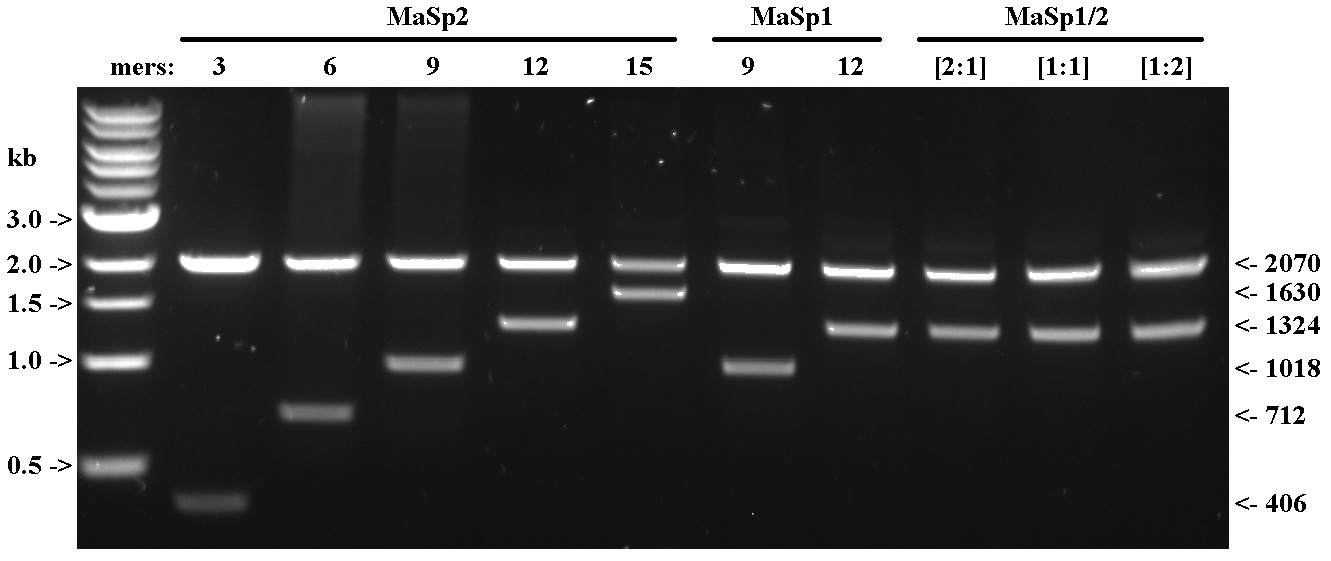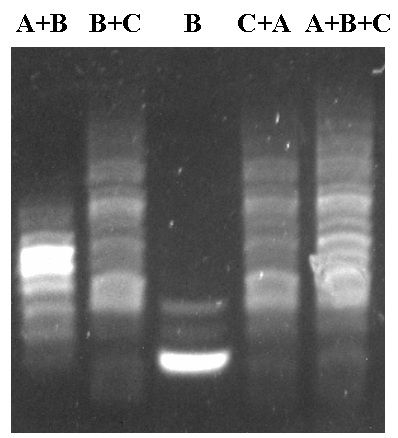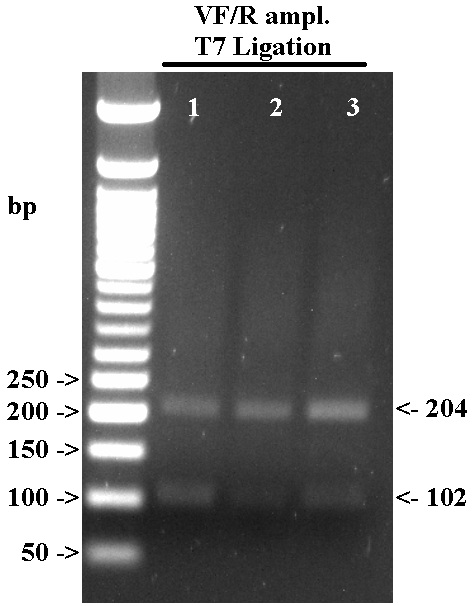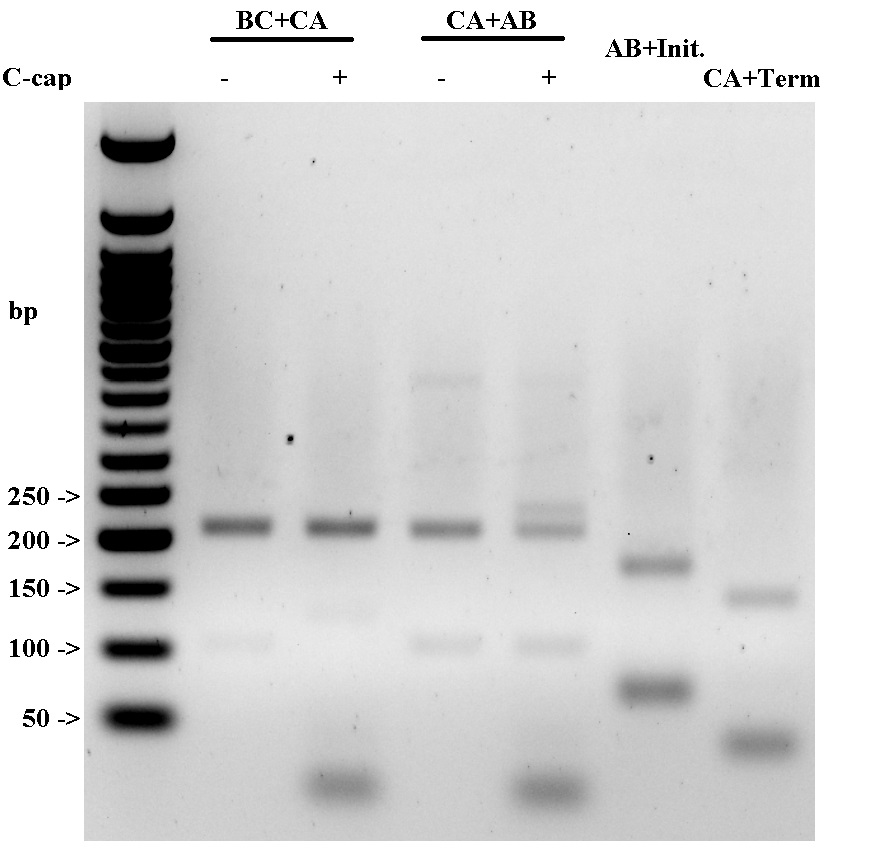Team:UCLA/Description
Improving BBa_K1384000
In order to fulfill a gold medal requirement we successfully improved the design of Biobrick BBa_K1384000. BBa_K1384000 was developed by the 2014 UCLA iGEM to be used in Iterative Capped Assembly. Early in our project, we attempted to use BBa_K1384000 to carry out ICA, but encountered difficulties due to non-specific ligation. For preliminary tests, we ligated pairs of monomers together to determine the efficacy of the old sticky ends.
The expected result of this test is a single band corresponding to the ligated 2-mer product. However, the ladder of bands indicates that the sticky ends bind non-specifically. We believe this result is due to several factors: the GC content of the sticky end is 50-75% (2-3 out of 4 bases); there is only one base pair difference between the sticky ends, which does not confer sufficient distinction between each sticky end. The high GC content is due to the sticky ends encoding Alanine, whose codons are GCN. The high similarity between the sticky ends is due to poor design.
This summer, we redesigned and expanded the original part to become our Spider Silk ICA Part collection (here and here)
We redesigned the sticky ends to overcome the two obstacles outlined above. Firstly, we decreased the GC content of the sticky by encoding alanine instead of valine. Alanine is coded for by GTN, which lowers the inherent GC content. We chose valine as a substitute for alanine due to structural similarity, so it would not interfere with the spider silk protein secondary structure. Secondly, we redesigned the sticky ends such that there was at least a two base pair difference between any two of the three sticky ends. Our final NEW sticky ends are:
- A: 5'-AGTT-3'
- B: 5'-TGTC-3'
- C: 5'-CGTG-3'
We incorporated these NEWLY DESIGNED sticky ends into MaSp1 and MaSp2 sequences. We tested the ligation characteristics of these new monomers by ligating pairs of monomers. The expected result of this test is a single band corresponding to a 2-mer product.
Our test results show only the expected ligation product, which validates the proper functioning of our REDESIGNED MONOMERS
In addition to characterizing the ligation behavior of the MaSp monomers, we also characterized the behavior of the redesigned monomers with accessory oligos used in ICA(6/3/2015). We tested ligating monomer with each capping oligo, and the AB and CA monomers with the initiator and terminator respectively.
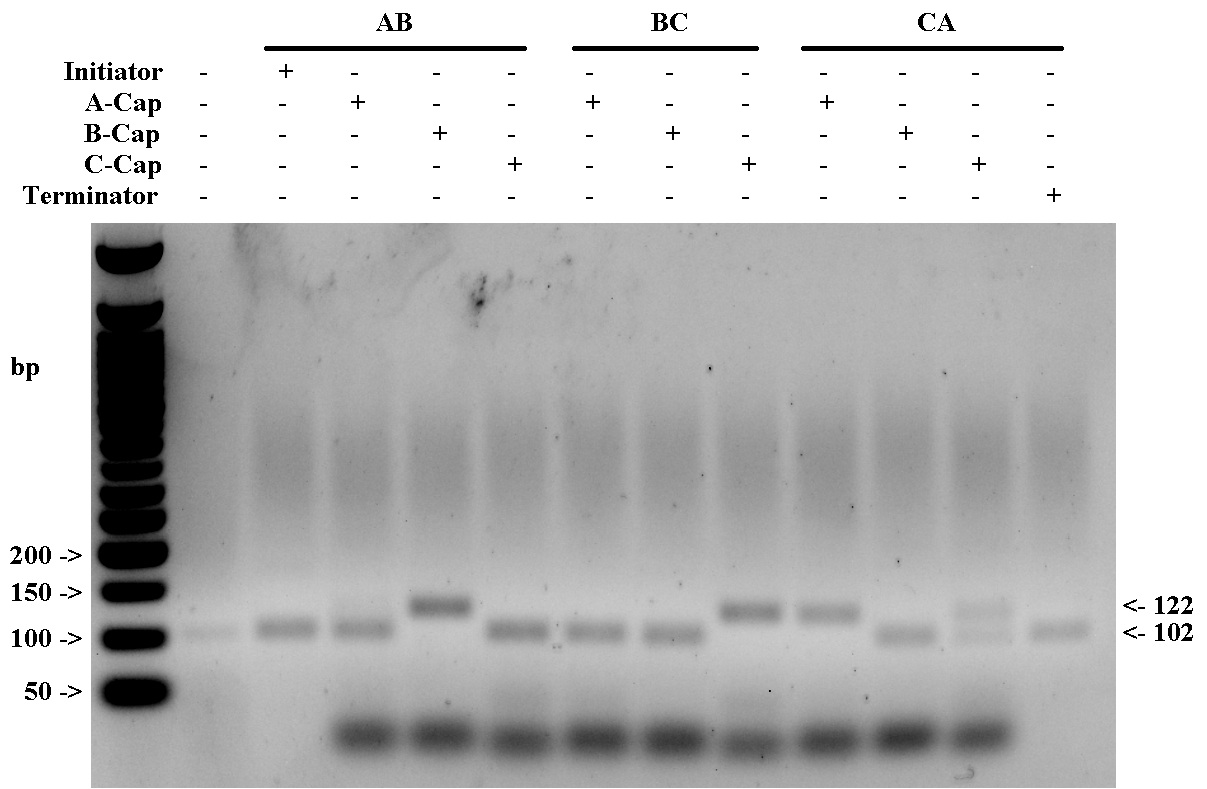
- We showed that the caps work as intended and would be usable in ICA.
- We expected the following combinations to ligate.
- AB + Initiator (inconclusive)
- AB + B-cap
- BC + C-cap
- CA + A-cap
- CA + Terminator (inconclusive)
- There was an insufficient amount initiator and terminator in the reaction, so no bands. But the sticky ends should work as expected.
- CA weakly ligates with C-cap, which is shown by the double bands present. This result was not expected, and may be due to non-specific ligation.
Because of possible undesirable non-specific interaction between monomer CA and C-cap, we performed a test to verify which end of the monomer the cap was binding to (6/5/2015). If the cap bound to the C-end, there would be no problem as this end is not exposed to the C-cap at any time. However, if the cap bound to the A-end, it could compete for ligation with the AB monomer, which would limit ICA efficacy. We tested this by "blocking" one end of the CA monomer by ligating CA to BC or AB. Then, the capping oligo was added to the mixture and left to incubate. If a double band corresponding to ligation appeared, it would indicate that the UNMASKED sticky end was binding to the cap. The results of this test are shown below. In addition, we would test the initiator and terminator at higher concentrations.
From these results, we can conclude that C-cap binds to the C-sticky end, and not the A-sticky end. We will be able to proceed with ICA as planned. In addition, the initiator and terminator work as expected.
With these results, we were able to confidently proceed to performing ICA. Throughout the summer, we were able to successfully use ICA to create a number of different constructs. These constructs were successfully cloned into Biobricks. The image below represents the cumulative work done using the REDESIGNED monomers, and demonstrates that we were able to substantially improve BBa_K1384000.
